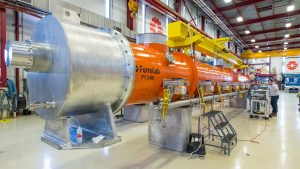Researchers from around the world come together at the U.S. Department of Energy’s Fermi National Accelerator Laboratory to make discoveries and breakthroughs solving mysteries of matter, energy, space and time. In 2019, the lab made major contributions to particle physics, particle accelerator and detector technology, and related fields.
Here, we look back at 10 ways Fermilab advanced science and technology this year. In 2019, Fermilab researchers and their partners:
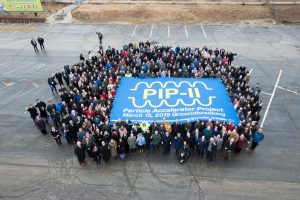 Broke ground for a new particle accelerator
Broke ground for a new particle accelerator
Researchers broke ground on a 700-foot long linear accelerator that will vastly improve what is already the world’s most powerful particle beam for neutrino experiments. The Proton Improvement Project II, or PIP-II, accelerator will be the first accelerator built in the U.S. with significant contributions from international partners and will provide for the long-term future of Fermilab’s diverse research program.
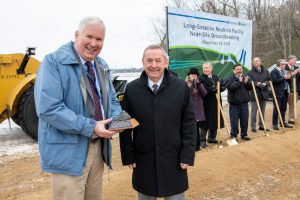 Celebrated LBNF/DUNE milestones
Celebrated LBNF/DUNE milestones
The international Deep Underground Neutrino Experiment, hosted by Fermilab, will need trillions of neutrinos traversing giant detectors in caverns a mile underground in South Dakota. The Long-Baseline Neutrino Facility will make this possible. This year, Fermilab and its international partners broke ground at Fermilab for the Illinois part of the LBNF project and embarked on LBNF pre-excavation work in South Dakota. Before building the full-scale detector, scientists are working on prototype technologies to amplify the neutrino signals. Scientists observed first tracks from this pioneering dual-phase technology, which was deployed in a DUNE prototype detector at CERN. The single-phase technology for DUNE was successfully prototyped in 2018 and has collected data throughout 2019.
 Built the world’s strongest accelerator magnet
Built the world’s strongest accelerator magnet
Next-generation particle colliders operating at very high energies will need magnets strong enough to keep particles on their collision course. An accelerator beam-steering magnet designed and built by Fermilab researchers reached 14.1 teslas, breaking the 11-year record of 13.8 teslas held by Lawrence Berkeley National Laboratory. Researchers are already planning to advance this technology to reach 15 teslas.
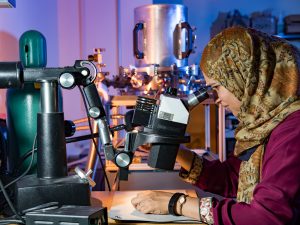 Launched the Fermilab Quantum Institute
Launched the Fermilab Quantum Institute
Fermilab scientists are working on new experiments in quantum computing, quantum sensors and quantum communication. They apply particle physics principles to the challenges of quantum science and use quantum technology to enhance their research into the smallest building blocks of the universe. In 2019, the Fermilab Quantum Institute was formed to bring all of the lab’s quantum computing experiments under one umbrella to spark innovations and streamline shared processes.
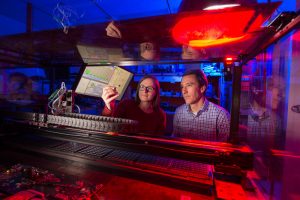 Improved LHC experiments for the next generation of scientists
Improved LHC experiments for the next generation of scientists
Fermilab received the green light from the DOE to advance projects to upgrade the Large Hadron Collider and the CMS experiment at CERN in Geneva, Switzerland. The upgrades will boost the number of proton-proton collisions in the LHC by a factor of 10 and make key enhancements to detector electronics so that scientists can keep up with the elevated collision rate. Fermilab researchers are collaborating with other DOE national labs to produce magnets that focus particle beams to enable more collisions.
Fermilab researchers with DOE partners designed, built and delivered superconducting accelerator cryomodules for upgrading the Linac Coherent Light Source at SLAC National Accelerator Laboratory. With these upgrades, biologists, chemists and physicists will be able to probe the evolution of systems on a molecular level, forming flipbooks of molecular processes using one million X-ray pulses every second.
Scientists celebrated the successful completion of data collection of the six-year Dark Energy Survey and the start of an intense data analysis phase. They hope that, amid the data taken using the Dark Energy Camera, there will be clues that will help them uncover the nature of dark energy, which could explain why the universe is going through a period of accelerated expansion. Two Fermilab scientists shared the Breakthrough Prize in Fundamental Physics, known as the “Oscars of Science,” for contributing efforts to taking the first image of a black hole.
 Led major advances in innovation and technology transfer efforts
Led major advances in innovation and technology transfer efforts
Fermilab researchers applied particle physics and accelerator technologies to a range of disciplines in 2019. Scientists and engineers achieved a landmark result in an ongoing effort to design and build compact, portable particle accelerators, demonstrating a new, efficient way to cool superconducting accelerator components. Fermilab and Natural Science LLC were finalists for a 2019 R&D 100 Award for the E-MOP oil removal technology, which uses magnetic fields to clean up oil spills. And, earlier in the year, Fermilab researchers and their collaborators received an R&D 100 Award for their design of a muon detector, which acts like a natural X-ray machine using cosmic muons and can be used in applications from maritime safety to homeland security.
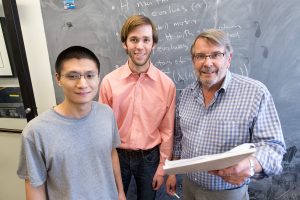 Identified the Rosetta stone for neutrino physics
Identified the Rosetta stone for neutrino physics
Fermilab theorists learned how to simplify calculations in neutrino physics by identifying a fundamental identity in linear algebra, a field of mathematics that has provided tools for mathematicians, physicists, engineers and others for centuries. The identity simplifies calculations involving neutrinos, allowing scientists to probe these rarely interacting particles in new ways.
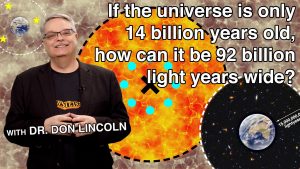 Released most viral science video to date
Released most viral science video to date
Fermilab scientist Don Lincoln explained how the universe can be 92 billion light-years wide when it’s only 14 billion years old in the Fermilab’s most viral science video to date, which has received over two million views since its release only five months ago. The video even made it into the top 25 on YouTube’s trending list the day it was released.
Fermilab is a DOE national laboratory supported by the Office of Science.




